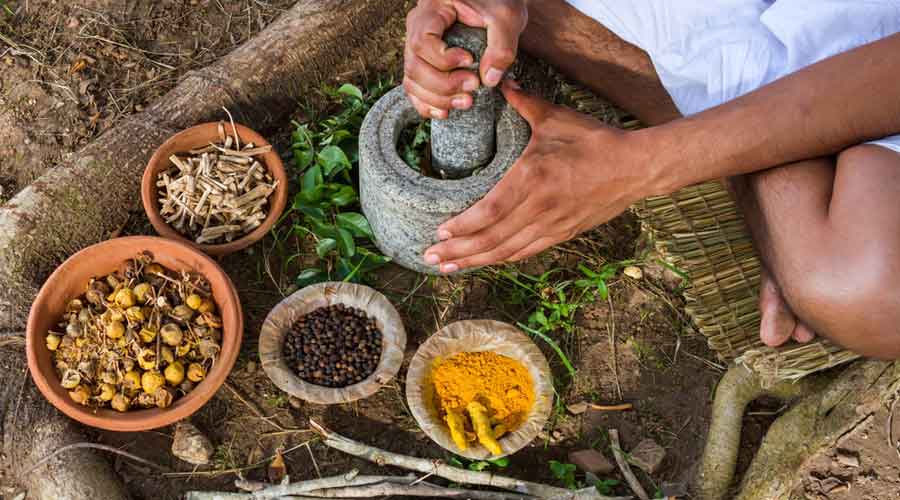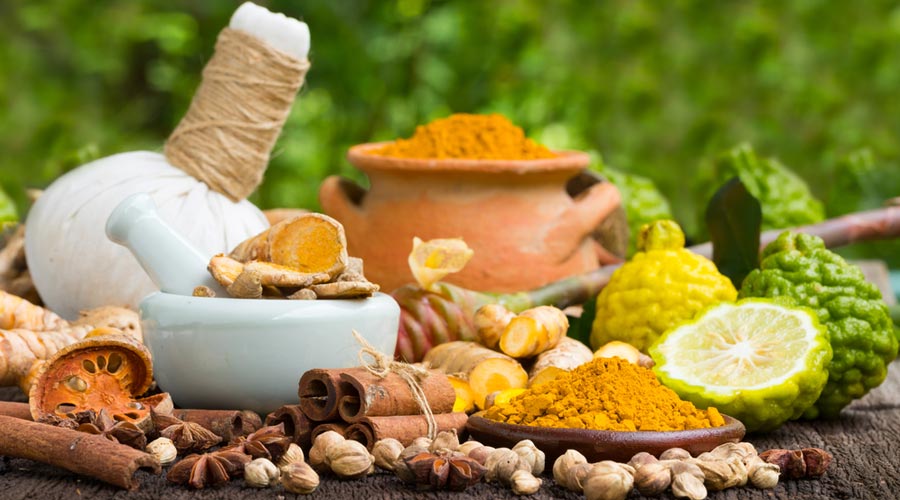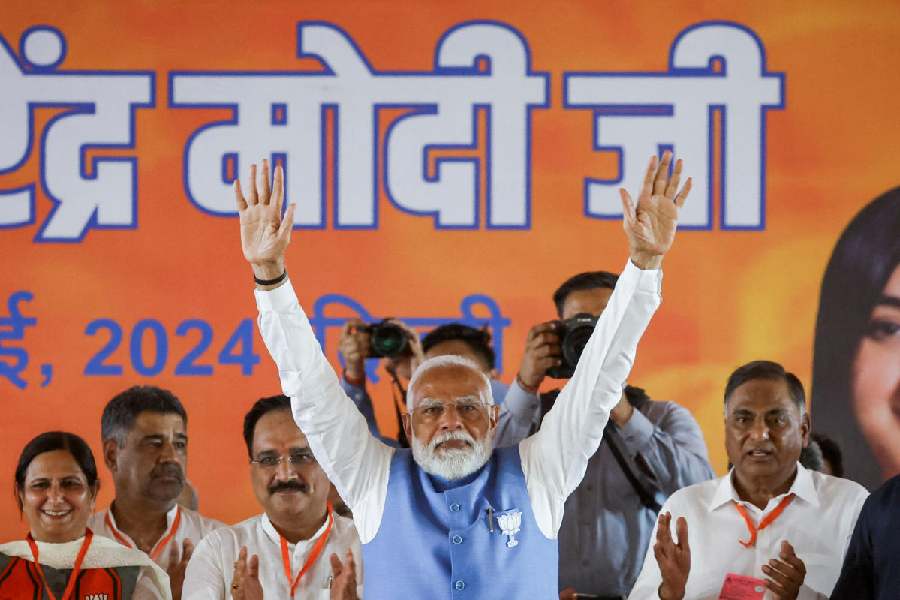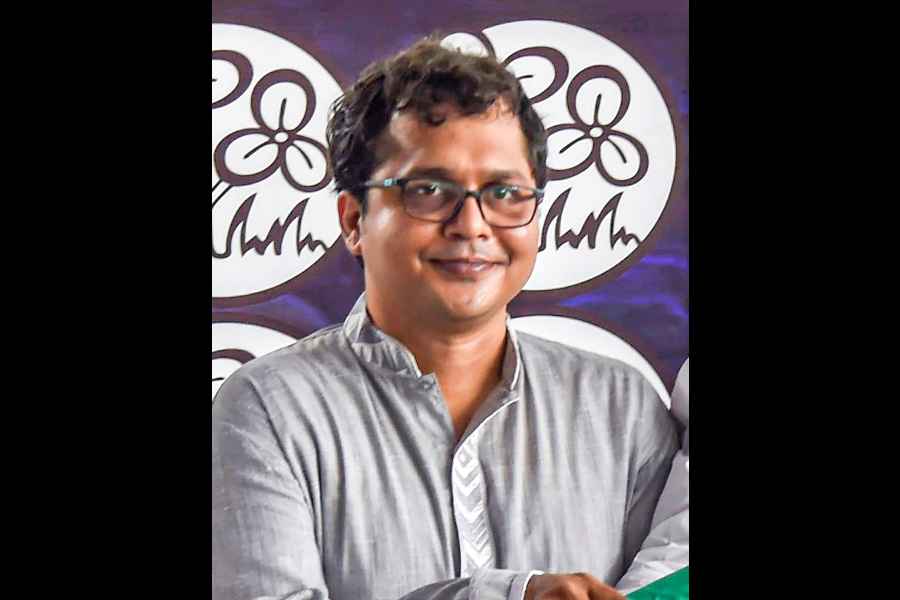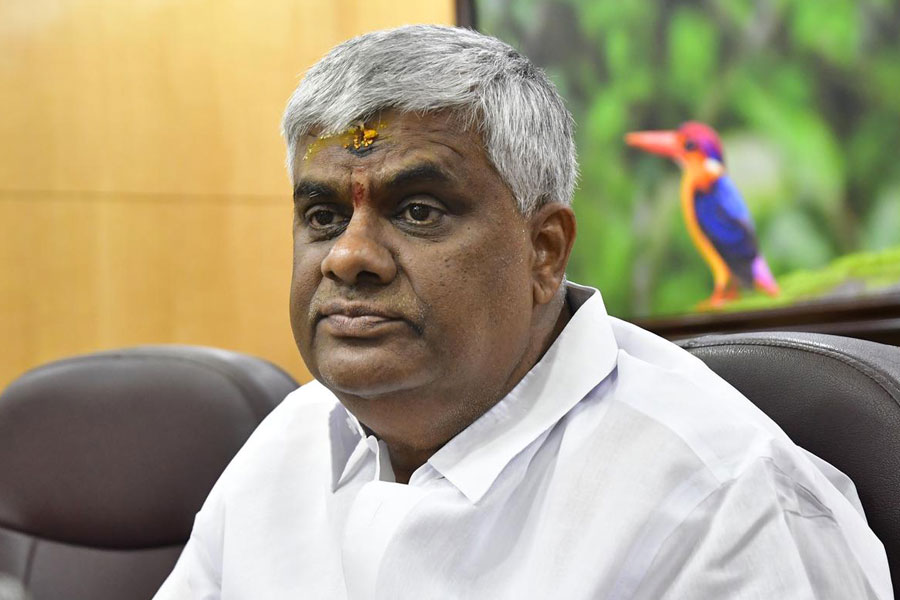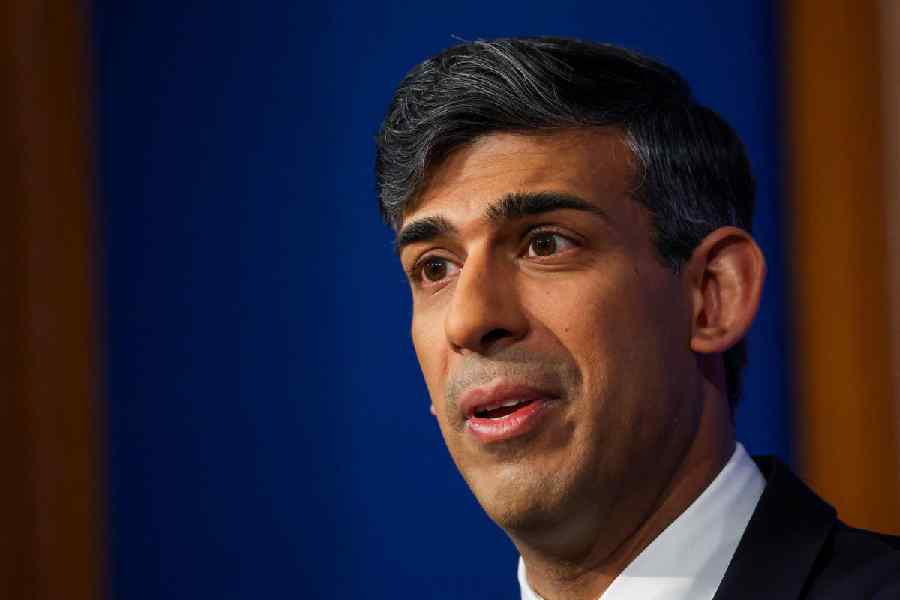An ayurveda physician has criticised the Centre’s use of the label “quantum mechanics” to describe an element of the undergraduate ayurveda syllabus, saying this “institutionalises a worldview” that threatens to turn an ancient medical heritage into a “pseudoscience”.
G.L. Krishna, Bangalore-based physician and Homi Bhabha Fellow, has suggested the idea is possibly to add gloss to the theory of ayurveda by tagging it with a prestigious branch of modern physics.
Quantum mechanics, developed in the early 20th century, uses mathematics to describe the behaviour of matter and light at the sub-microscopic level.
Krishna has questioned the inclusion of the term “quantum mechanics” in a February 16, 2022, notification from the National Commission for Indian System of Medicine (NCISM) that outlined the Bachelor of Ayurvedic Medicine and Surgery (BAMS) syllabus.
The NCISM is a regulatory body under the Union ministry for ayurveda, yoga, unani, siddha and homoeopathy (ayush).
A table in the NCISM notification listing the subjects prescribed for the first 18 months of the BAMS course includes the subject “padartha vijnana”, which it describes as “fundamental principles of ayurveda and quantum mechanics”.
Krishna said the syllabus for padartha vijnana, available on the NCISM website, is actually meant to acquaint students with certain philosophical concepts that provide the basis for ayurvedic theories.
“But the subject has nothing at all to do with quantum physics,” Krishna wrote in a commentary earlier this month in the Indian Journal of Medical Ethics.
He wrote that the inclusion of quantum mechanics in the subject title “springs from the presupposition that ancient Indian philosophical literature contains advanced science couched in pithy utterances”.
Krishna had in August 2021 written to the NCISM urging the regulatory body to remove the expression “quantum mechanics” from its draft notification and define padartha vijnana as “fundamental principles of ayurveda in relation to their roots in Indian philosophy”.
He had said that connecting ayurveda’s fundamentals to quantum mechanics was “erroneous”, and urged the NCISM to make corrections.
Krishna wrote: “More importantly, please infuse rationality and scientific thinking in the way ayurveda classics are being approached and studied.”
The ayush ministry has said that padartha vijnana deals with the principles of the formation of matter, the universe, and the relationship between the universe and the human body.
“As quantum mechanics is a fundamental theory in physics that provides a description of the physical properties of nature at the scale of atoms and subatomic particles, the term quantum mechanics has been used as an equivalent term to padartha vijnana,” the ministry has told this newspaper, which had sought comments on the concerns expressed by Krishna.
Krishna and other scientists advocating the use of scientific methods to explore the biological principles of ayurveda believe that the inclusion of the label “quantum mechanics” in the notification reflects efforts to needlessly tag ayurveda with advanced physics terminology.
“The tendency to ‘discover’ quantum physics in traditional concepts where they do not actually exist seems to have become a common practice,” said Subhash Lakhotia, a distinguished professor of zoology at Banaras Hindu University.
Lakhotia, who has researched ayurveda and argued for its evidence-based integration with modern biology and medicine, said the traditional medicine system “has many good things to offer, but we need to separate myths from facts in a dispassionate manner”.
Some concepts of ayurveda, Krishna said, are obviously dated and adorning them with a label from advanced physics won’t change that. Classical ayurveda texts, for instance, propose that semen originates in the bone marrow and that blood gets its colour from the stomach.
Krishna said the effort to connect quantum mechanics to ayurveda threatens to turn a centuries-old and valuable medical heritage into a pseudoscience.
“It is a disservice to this valuable medical heritage,” he wrote in the IJME.
Apart from padartha vijnana, the 18-month segment of the BAMS course includes human anatomy, human physiology, classical ayurveda texts, Sanskrit and the history of ayurveda.

